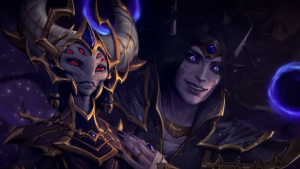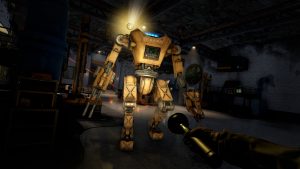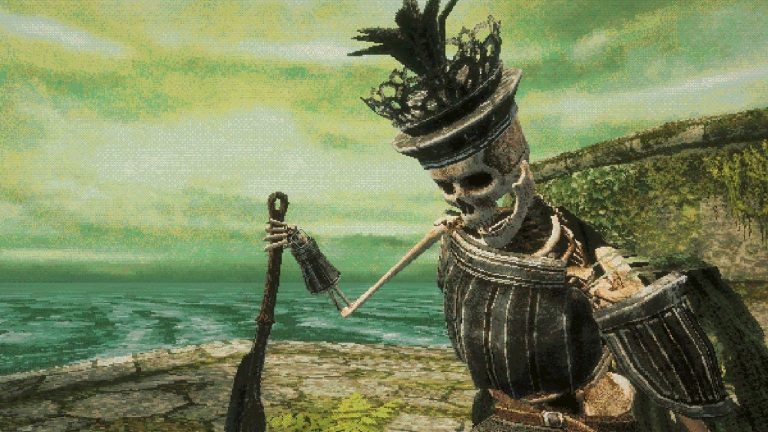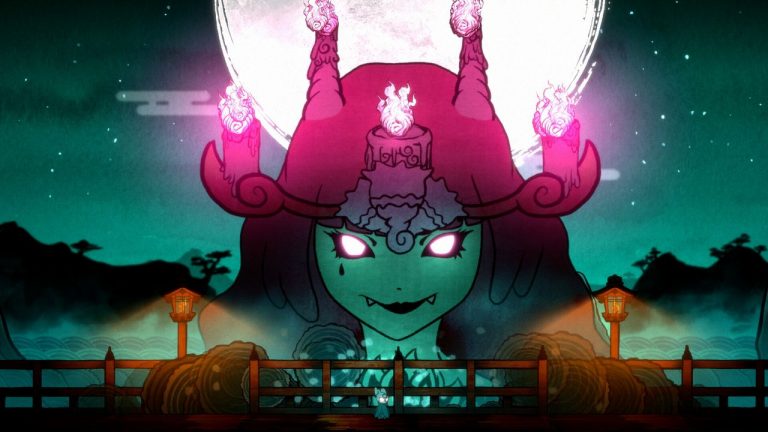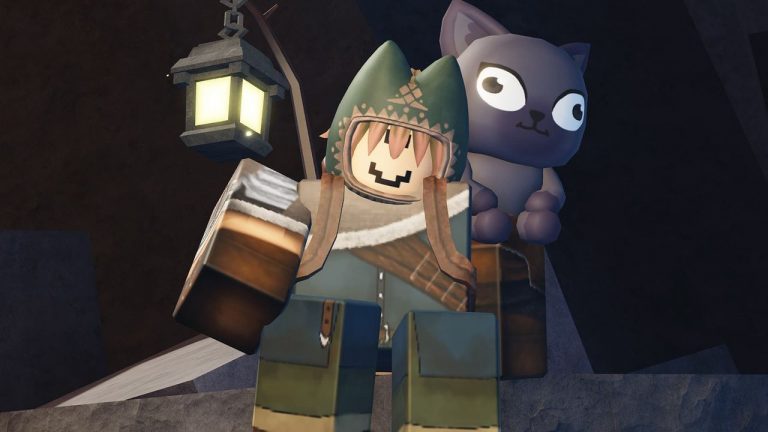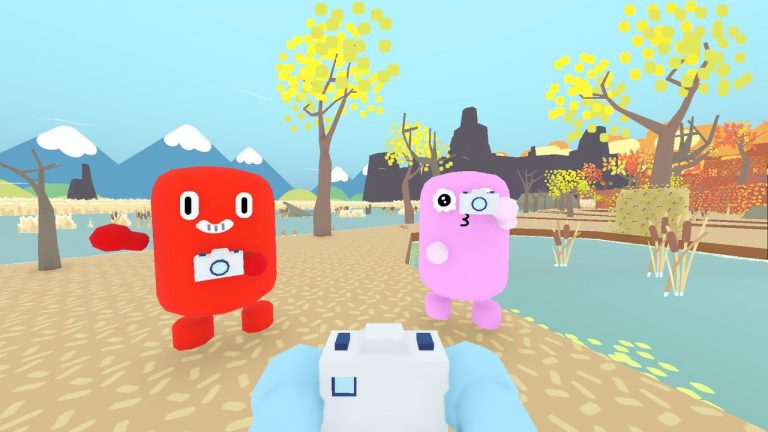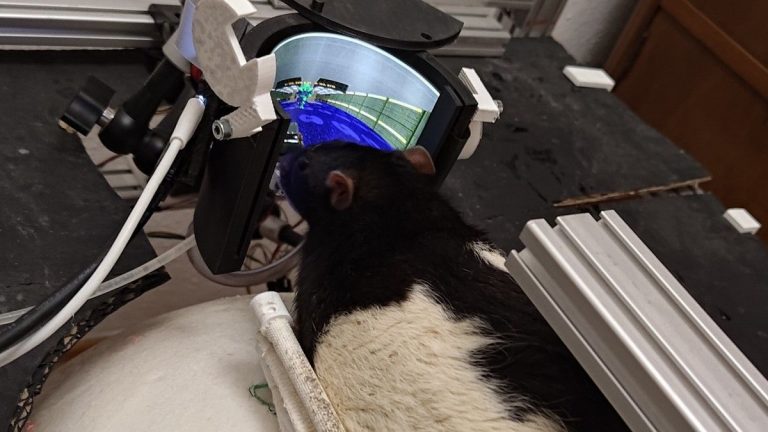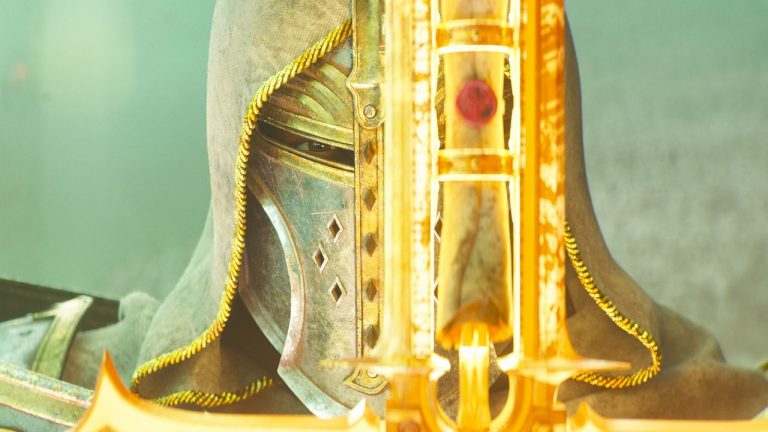Black Myth: Wukong is “a stunning action game clearly inspired by the Dark Souls series,” we said in our 87% review. It’s also a new link in a very long, rich, and constantly evolving chain of mostly untranslated Chinese-language RPGs that have too often passed English speaking gamers by. The current star of this often overlooked segment of gaming may be a graphics card-stressing adventure that focuses almost entirely on the action, but Chinese RPGs have been steadily working towards this sort of breakout success for decades. It just took a whole lot of slow, often turn-based steps to get there.
Although it wasn’t the very first, Taiwanese-developed Sword and Fairy, released on DOS-based hardware similar to the PCs English speaking RPG fans were using to play Stonekeep and Ravenloft: Stone Prophet on at the time, had a huge impact on everything that followed. The story charted a magically-infused romance from humble hometown to its tragic end, well-received not only in its original game form but also in the multiple luscious and lengthy TV adaptations made afterwards.
As timeless as the story is, the RPG that surrounded it followed a traditional town/dungeon formula familiar to gamers the world over, with action portrayed using isometric 2D pixel art. The battles in Sword and Fairy were strictly turn-based: Heroes on one side of the screen, enemies on the other, and all attacks handled using a simple menu system. But that was perfectly fine in 1995.
Sword and Fairy was more than a hit: it was a historically significant masterpiece, a fantastic game that every Chinese and Taiwanese RPG developer at the time wanted to create their own spin on. Sword and Fairy’s sequels, spinoffs, and sister series Xuan Yuan Sword even ended up struggling to outdo.
Old battles are given a new real-time twist
(Image credit: Kingsoft Corp.)
(Image credit: Kingsoft Corp.)
(Image credit: Kingsoft Corp.)
(Image credit: Kingsoft Corp.)
Time marched on regardless, and soon mainland Chinese RPGs were also trying to bring a little action and excitement to the traditionally stat-heavy genre. 2001’s Jian Xia Qingyuan Waizhuan: Yue Ying Chuanshuo merged an almost Baldur’s Gate-like presentation with real-time skirmishes. Here fights play out naturally within the environment and how often and how fast I swung my sword depended entirely on how often and how fast I clicked my mouse button. Turns and formations simply weren’t a thing, although an achy index finger was. Did this early attempt to “go action” work? Oh heck no, not even close. Clicking on tiny highly mobile VGA-sized sprites over and over again wasn’t practical, let alone fun. It was an interesting experiment, though, even if it’s also one I hope I never encounter again.
Thankfully the Fantasia Sango series, starting in 2003, offered a more successful mix of RPG and action. These games are set in a gloriously colourful take on Three Kingdoms-era China, mythical versions of famous people and fantastical takes on real-world locations used as a backdrop for heroes to battle and romance their way through. Taiwanese developer UserJoy Technology Co. came up with something a bit different from all the lightsaber action found in another RPG released that year—KoTOR—but it still had the same desire to bring something new and more directly interactive to the genre.
As in Sword and Fairy the heroes are lined up on one side of the screen while the enemies politely keep to the other, but there’s a new and unstoppable layer of action running underneath it all, a truly fresh twist on traditional RPGing. A Final Fantasy-like ATB gauge governed when friends and foes alike could perform an action, but the game then expanded on the concept of active combat in ways Square’s headline games never would.
Both sides arranged their combatants on a generously sized grid, the positions controlling which attacks could hit their mark (a 1×3 square swipe would leave the back half of a 2×2 formation unharmed, for example).
2003’s Fantasia Sango (Image credit: UserJoy Technology Co., Ltd.)
2003’s Fantasia Sango (Image credit: UserJoy Technology Co., Ltd.)
2003’s Fantasia Sango (Image credit: UserJoy Technology Co., Ltd.)
2003’s Fantasia Sango (Image credit: UserJoy Technology Co., Ltd.)
Formations could also be changed mid-battle, altering buffs and character positions in the process. Here a character was more than a bundle of numbers with some equipment attached. They were a physical presence on the battlefield.
And that meant when they attacked mattered just as much as who they attacked. Well-timed blows of any sort could combo with other characters’ offensive skills, increasing the damage they caused. This battle system worked so well the series started with it and then kept it forever, the idea going from innovative action to comfortingly familiar as the years passed by.
Embracing QTEs and a more active future
Even as action RPGs were clearly taking over in China, exactly how that action materialised was still somewhat open to interpretation
By 2010 singleplayer Chinese RPGs were somewhat stagnating in the face of the unstoppable threat/promise of endless money in mobile gaming and F2Ps MMOs. Shanghai developer Aurogon’s Gu Jian Qi Tan made a great effort to drag them back into the limelight with polished, voice-acted cutscenes packed with animated characters. Its locations weren’t just rendered in lavishly detailed 3D, but were truly awe-inspiring. Pink petals fell from blossoming trees near gorgeous lakes, cheeky monkeys hid in autumnal forests, and monsters loomed over the party in battle.
This beautiful bow was wrapped around a game eager to move with the times, and that meant introducing action wherever it could. QTEs allowed hero Tusu to perform dramatic leaps and gravity-defying runs, as if he was the athletic star of a wuxia movie. Battles tried to mix traditional turns with flexible timings, a bar across the top denoting when someone’s attack was coming up, and whether that heal you needed would come before or after a powerful enemy had unleashed their next move.
2013’s Gu Jian 2 exhibits its focus on presentation (Image credit: Aurogon Info&Tech (Shanghai) Co., Ltd.)
2013’s Gu Jian 2 exhibits its focus on presentation (Image credit: Aurogon Info&Tech (Shanghai) Co., Ltd.)
2013’s Gu Jian 2 exhibits its focus on presentation (Image credit: Aurogon Info&Tech (Shanghai) Co., Ltd.)
2013’s Gu Jian 2 exhibits its focus on presentation (Image credit: Aurogon Info&Tech (Shanghai) Co., Ltd.)
2013’s Gu Jian 2 exhibits its focus on presentation (Image credit: Aurogon Info&Tech (Shanghai) Co., Ltd.)
2013’s Gu Jian 2 exhibits its focus on presentation (Image credit: Aurogon Info&Tech (Shanghai) Co., Ltd.)
2013’s Gu Jian 2 exhibits its focus on presentation (Image credit: Aurogon Info&Tech (Shanghai) Co., Ltd.)
2013’s Gu Jian 2 exhibits its focus on presentation (Image credit: Aurogon Info&Tech (Shanghai) Co., Ltd.)
2013’s Gu Jian 2 exhibits its focus on presentation (Image credit: Aurogon Info&Tech (Shanghai) Co., Ltd.)
Gu Jian 2 would take this idea further, introducing free movement and using MMO-style skill cooldowns in battle. 2018’s Gu Jian 3, which is one of the rare few Chinese RPGs officially available in English, reduced the party size down to one and transformed the game into a real-time action adventure. This series was a turning point for RPGs made in China, and another step away from their orderly past. After Gu Jian, any Chinese RPG hoping to turn heads and make headlines had to be as close to cutting-edge-gorgeous as possible, and ideally had to be heavily action oriented too. The trend abroad wasn’t too different: The Witcher 3 bowled everyone over in 2015, while Final Fantasy 15, released in 2016, also pushed heavily in the action direction.
Even as action RPGs were clearly taking over in China, exactly how that action materialised was still somewhat open to interpretation. In 2016, Genshin Impact developer MiHoYo’s first breakout game, Honkai Impact 3rd, presaged the arrival of mega-budget gacha RPGs. But not everything was headed that way.
2017’s Faith of Danschant took a different path to modernising this ancient genre. In screenshots it has all the hallmarks of a modern AAA game: Feixing is a flexible hero who can generally rely on on-screen waypoints to guide him to his next event, and only needs to be given a nudge and maybe a quick button press to perform some sort of fluidly animated context-sensitive environmental traversal. NPC chatter automatically sparks up whenever he passes by, because who actually has the time to stop and talk these days, right?
This free and loose interactivity tied to sumptuous presentation was a firm foot forward, but in combat Danschant always kept one toe dipped in the past. Battles use a mix of broadly Fantasia Sango-like chaining coupled with tactical cooldown timing, and then combine it with a dynamic positioning system. One moment three people are lined up to face a powerful monster, as quintessentially RPG as ever, but the next the entire team’s dashing off to the side so they can completely avoid what would have been a screen-filling attack. The battle then seamlessly continues on from this new position, reinforcing the game’s modern 3D environments.
A little less RP, lots more G
Faith of Danschant was something of a curious outlier, and many games fully embraced real-time action and saved almost all of their RPGing for cutscenes. 2020’s Xuan Yuan Sword 7 opted for seamless sword swinging set in various gorgeous 3D locations, coupled with a streamlined story that prioritised getting from one spectacular event to the next over anything else. Time-padding fetch quests were a thing of the past, and although the maps always looked expansive they kept players walking a relatively narrow path, with nothing more than the odd treasure chest hiding away down the occasional short and easily backtracked diversion. This same year, Baldur’s Gate 3 entered early access and Cyberpunk 2077 had its somewhat wobbly launch—both embracing a freeform open world structure that Chinese RPGs didn’t seem interested in following.
Xuan Yuan Sword 7’s latest stablemate from publisher Softstar, 2021’s Sword and Fairy 7, tilts the balance even further towards action over numbers.
There are sneaky stealth segments and seamless battles that rely on me perfectly timing dash-dodges in response to telegraphed incoming blows, or running off to take cover before a particularly devastating attack goes off. It’s a thrilling spectacle, and one where my stats and equipment very much take a back seat. How I handle my heroes from one moment to the next and how I react to the damage headed my way are always the deciding factors in battle, much like in Black Myth: Wukong’s soulslike skirmishes.
Where will mainstream Chinese RPGs go next? Who knows. But it’s safe to say that whatever direction they take it’ll be a spectacular, experimental, and constantly evolving ride that’s different from everything that came before it—which funnily enough, would make it the same as everything that came before it too.

